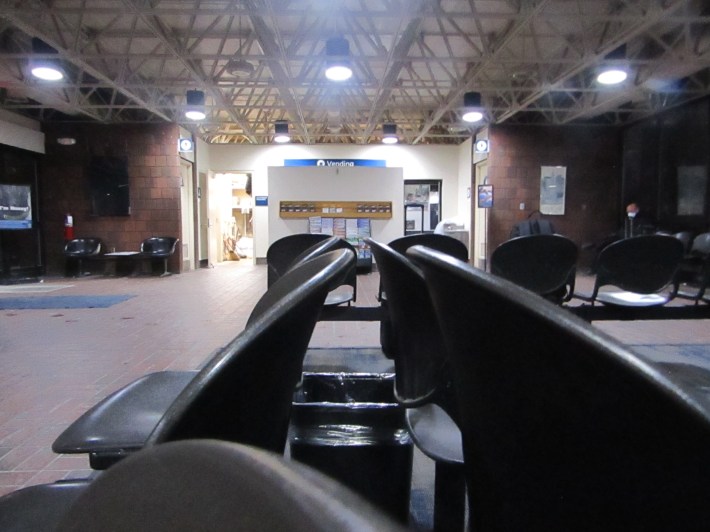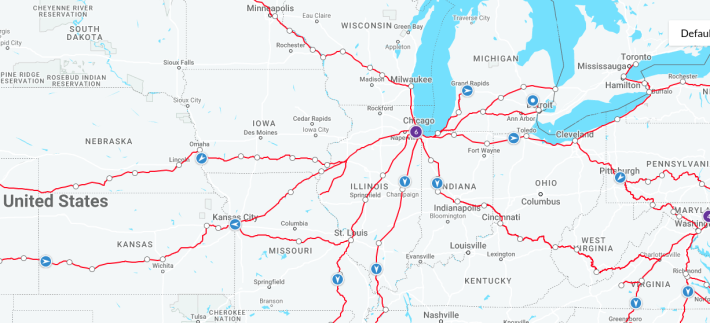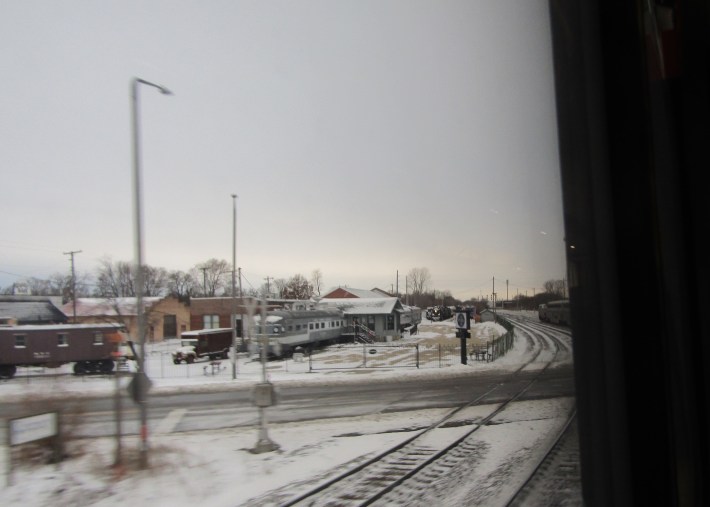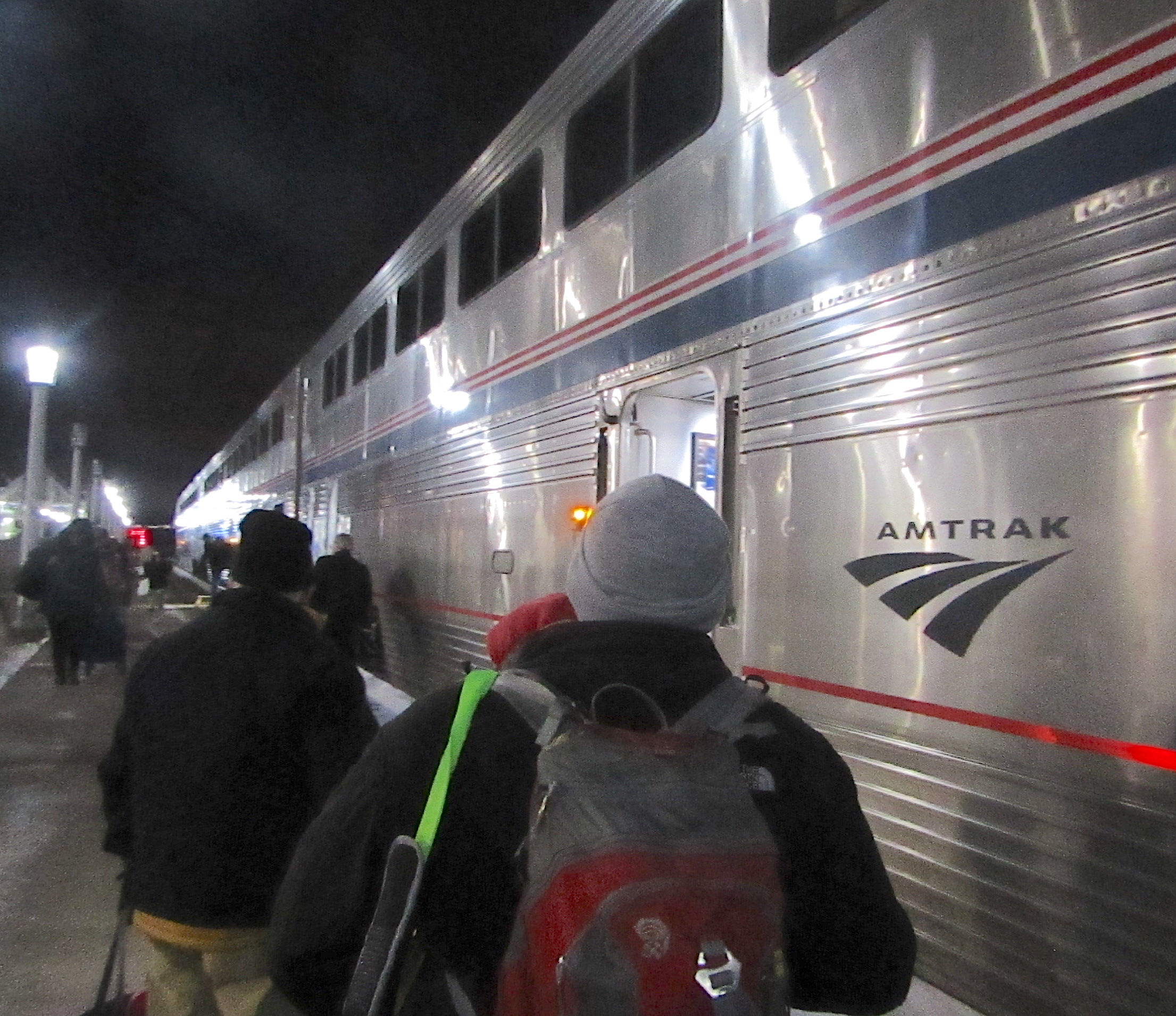While Chicago polar vortex-related flight cancellations have been covered extensively on the news, Amtrak hasn’t gotten nearly as much attention – even though state-supported and long-distance Amtrak trains that serve Chicago continue to be impacted even as the weather warms up.
As the storm approached last week, Amtrak cancelled three long-distance trains that serve Chicago and were scheduled to depart on December 22 and December 23. These were the Empire Builder, which links the city to Seattle And Portland; the Capitol Limited, which runs between Chicago and Washington D.C.; and the Lake Shore Limited, which runs between Chicago, New York, and Boston. The Cardinal train, which takes a somewhat more circuitous route between Chicago and New York through the states further south, was cancelled until December 24 (unlike the other trains on the list, it runs once every two days in each direction.) Amtrak also cancelled some, but not all, state-supported trains serving Illinois, Wisconsin, and Michigan. The Southwest Chief, which runs between Chicago and Los Angeles, was only cancelled on December 23. Two long-distance trains – the City of New Orleans, which serves the eponymous city, and the California Zephyr, which serves the San Francisco Bay area – weren’t cancelled at all, although they did see some delays.
Some trains have since been restored, but some state-supported routes continue to operate on reduced schedules. As of Wednesday, December 28, the Lake Shore Limited still isn’t back in service. The first post-storm Capitol Limited Train 29 (the Chicago-bound one) left Washington D.C. on Christmas Day and arrived two hours late in Chicago the following day, but the Christmas Day Capitol Limited Train 30 (the D.C.-bound one) was cancelled at the last minute. However, the line has since returned to full service. The Empire Builder is gradually returning to full service, but it currently only operates between Chicago and Minneapolis.
I got a front-row seat to those disruptions, although I managed to avoid the worst of it. I was planning to celebrate Christmas with some relatives in the Cleveland suburbs, and I originally planned to take the Friday, December 23, Lake Shore Limited train there, and then take the aforementioned Christmas Day Capitol Limited Train 29 back. Because the Friday train was cancelled due to the weather prediction, I moved my departure on the Lake Shore Limited two days earlier to Wednesday, December 21, before the snow flew, and so did plenty of other passengers I ended up sharing a train with. And while I was able to take the Capitol Limited back to Chicago, I watched the passengers waiting for Train 30 scramble to figure out alternate travel arrangements.
Leaving before the snow
Amtrak doesn’t have to worry about takeoff and landing during the bad weather, and trains can plow through snow the way cars can’t, but they are not immune to snow storms. Too much snow can still get in the way and impair visibility. Just as importantly, cold temperatures can freeze the track switches and affect locomotives. The last thing Amtrak wants is for the trains to be stuck in the middle of nowhere, especially if the heat goes out. Another important thing to bear in mind is that Amtrak train crews aren’t allowed to work for more than 12 consecutive hours, which makes sense – you don’t want fatigued crew members operating a equipment that can flatten a truck – but it can exacerbate the delays.
As the storm approached, Amtrak notified customers of the cancellation less than a day ahead of time. I got an e-mail and a text message on December 21 at 12:23 PM, along with a link to rebook the trip. It would be another three hours before Amtrak would post anything online. I also got an automated call from Amtrak about rebooking the trip about half an hour after the e-mail/SMS combo. By the time the call came, I already consulted my relatives and rebooked for December 21.
As I was heading home from work to frantically pack, the scale of the delays was starting to become apparent. In addition to the long-distance trains mentioned earlier, it also reduced the number of state-supported trains serving Chicago. Amtrak cancelled two out of four Chicago-to-St. Louis Lincoln Service trains, all but one Chicago-to-Milwaukee Hiawatha train, and one out of three Wolverine trains in each direction until Christmas Day. The railroad also cancelled the morning runs for Illini/Saluki trains, which serve southern Illinois, for December 23, and the next two Pere Marquette trains, which serve western Michigan.
It also became clear that the riders who booked long-distance trains didn’t have many alternatives. Greyhound and other intercity bus operators, which are still trying to recover from pandemic-related service reductions, were cancelling trips left and right as well.
As I went to board Lake Shore Limited, it quickly became clear that Amtrak wasn’t ready to handle all the people that rebooked their trip. Normally, boarding the trains is a relatively brisk process, with the crew sending passengers to train cars based on their destinations. But that evening, the line crawled. Even once everybody got on board, the crew was struggling to figure out where to put them. Several passengers had to stand near the ADA-accessible seating as they waited for the crew to find spots for them.
“We can sit in the café car,” one of the passengers offered at one point.
While they were all eventually seated, the issue persisted as the train stops. As I prepared to disembark at Cleveland, I saw a man waiting to be seated at the same spot. It turned out, he’d been waiting since the last stop.
The chaotic return
I booked my return trip on Capitol Limited for the simple pragmatic reason that, while both Limiteds stopped in Cleveland in the middle of the night, the Capitol stopped earlier in the night (2:56 AM vs 4:05 AM). [Yikes! -Ed]
Throughout my stay in Cleveland, I kept an eye on the Amtrak service alerts and watched as both trains (among others) kept getting cancelled. But, on Christmas Day, Capitol Limited Train 29 left Washington D.C. – with some delays, but at least I had a way out.
People heading the other way weren’t so lucky.

As I stepped inside the Cleveland station at around 12:30 AM, I heard a middle-aged man loudly complaining about eastbound Train 30 being delayed and Amtrak not keeping him in the loop. A woman sitting by the platform door was typing furiously on her phone, wondering aloud if there was a real-time train status information. I pulled up the train tracker – and saw that the train, which should have been in Indiana already, was still at Chicago's Union Station.
I checked Twitter and, between Amtrak alerts and passenger tweets, a picture emerged. The train was, indeed, stuck at the Union Station due to an “unforeseen mechanical issue,” and nobody would give the passengers, who were already frustrated by earlier train cancellations, any information about when it might depart. The Cleveland station staff admitted that they had no idea either, but said that they would be happy to refund the tickets, and suggested that they find alternative transportation.

It turned out that the Greyhound bus to Pittsburgh would leave at 1:45 AM local time. The woman by the door bought what turned out to be the only available ticket. The middle-aged man and his companion ended up ordering a taxi. Over the next hour or so, more Train 30 passengers kept coming in, some rebooking for a later trip, some simply leaving in frustration.
Amtrak cancelled that night’s Train 30 at 1:27 AM Chicago time. Interestingly, while the earlier alerts cited mechanical issues, the alert announcing the cancellation cited the weather issues.

Westbound Train 29 arrived in Cleveland at 4:10 AM, with most of the 15 passengers heading to Chicago. The car where they were sent was almost empty, and there were plenty of empty seats for the rest of the trip.
By the time I returned to Chicago, all regularly scheduled Hiawatha trains were running, but Amtrak was still cancelling some Lincoln Service, Saluki/Illini, and Illinois Zephyr trains, and the Lake Shore Limited and the Empire Builder still weren’t operating at all. Since then, the Lake Shore Limited still hasn’t resumed service, in large part because the snow storm hit the parts of the western New York state it serves particularly hard. The Empire Builder hasn’t fully returned to service due to the lingering effects of the snow storm in North Dakota.

While airline disruptions got most of the attention, Amtrak is also crucial for travel between cities. Riders in Cleveland were able to book Greyhound buses, but many small towns served by the suspended long-distance routes – such as Waterloo, Indiana and Browning, Montana – have no other intercity public transit service whatsoever. The ongoing disruptions drove the point home.




